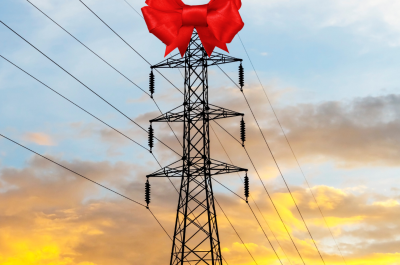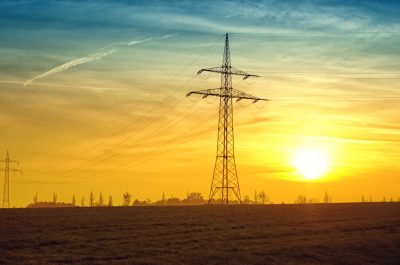President Trump’s new Energy Paradigm
The surprise election of reality TV star and property developer Donald Trump as the 45th President of the United States may mean major changes for international action on climate change and the transformation of the US energy system. But, the outlook is uncertain, even as governments head to Marrakech for COP22, the United Nations Climate Change Conference.
THE CAMPAIGN
Donald Trump’s election surprised pundits and poll averages and sent shockwaves through markets. As the election result became clear, trading in the SP500 Futures index was temporarily suspended, Australian, Asian and UK Markets fell sharply, before recovering partially during the day. The Mexican peso which had been expected to fall by 25 per cent, in the event of a Trump victory was down 12percent against the US dollar[1].
Trump’s victory brings with it not only the Presidency but the expected Republican control of both the Senate and the House. This alignment creates a clearer path for the implementation of Trump’s energy and carbon policy agenda, but the actual policies to be implemented are somewhat less clear.
DOMESTIC ENERGY POLICY
President Elect Trump’s “ America First Energy Plan” focused on domestic energy resources, with an emphasis on the opportunities for coal, oil and natural gas and rolling back Obama administration regulations including the Climate Action Plan and ‘Waters of the US’ rule. Trump has also provided strong support for unconventional gas development and for the development of the Keystone XL pipeline.
While stating his support for “all kinds of energy”, Trump has campaigned for restoring jobs lost in the US domestic coal industry, criticised the cost of solar and noted that wind farms are “killing all the eagles.”
“I know a lot about solar,” he said. “The problem with solar: It’s very expensive. When you have a 30-year payback, that’s not exactly the greatest thing in the world. But I know a lot about solar. I have gone solar on occasion, but it is a very, very expensive thing.”
“Wind is very expensive,” Trump added. “I mean, wind, without subsidy, wind doesn’t work. You need massive subsidies for wind. There are places maybe for wind. But if you go to various places in California, wind is killing all of the eagles.”
Donald Trump, quoted in Utility Dive
He has promised to scrap the Environmental Protection Agency Regulations under the Clean Power Plan.
“Regulations that shut down hundreds of coal-fired power plants and block the construction of new ones — how stupid is that?”
Donald Trump, quoted in New York Times
As President, Trump will not have executive authority to scrap the regulation unilaterally, he can work with a united congress to defund the Clean Power Plan. He can also influence the Supreme Court consideration of a challenge brought by several States opposed to the plan. As the new president will be responsible for appointing a Supreme Court Justice after the death of Justice Antonin Scalia, this could change the face of carbon regulation in the United States during his term in office.
INTERNATIONAL CLIMATE ACTION
President Trump’s election will add significant uncertainty to the COP22 deliberations which are underway in Marrakech at present. International delegates, including Australia’s Minister for Environment and Energy, Josh Frydenberg and Minister for Foreign Affairs Julie Bishop, will be seeking to interpret what Trump’s past comments mean for international agreement.
Trump has previously rejected the Paris Climate Change Agreement, stating that
We’re going to cancel the Paris Climate Agreement and stop all payments of U.S. tax dollars to U.N. global warming programs.
As news of Trump’s election reached Marrakech, climate scientists were holding out hope that, once elected, the President would strike a more moderate position on climate action.
“If the US pulls out of this, and is seen as going as a rogue nation on climate change, that will have implications for everything else on President Trump’s agenda when he wants to deal with foreign leaders. And I think he will soon come to understand that”.
Alden Meyer from the Union of Concerned Scientists
The President Elect’s platform is in stark contrast to a Clinton campaign which would have looked more like an extension of the Obama administration, than the demolition proposed by the Trump presidency. On climate change the Clinton campaign claimed that;
Her domestic energy and climate strategy will put the United States on track to meet or exceed its pollution reduction commitment under the Paris Climate Agreement, and on track to deliver a greater than 80% reduction in US greenhouse gas emissions by 2050. She will use every diplomatic avenue to make sure that the Paris agreement and other climate agreements are fully and robustly implemented.
WORKING WITH THE STATES
A significant amount of energy policy decision making happens at the state and local levels in the US. The success of Mr Trump’s domestic energy plan will be influenced by how the new administration works with the states, particularly the powerhouse energy reforming states such as California and New York. Democratic Governor’s Jerry Brown (California) and Andrew Cuomo (New York) have strong, if differing, policy agendas for renewables and new business models for energy delivery. For instance, California has flirted with – but deferred – reforms to the distortionary net metering rules applying to small scale solar markets, whereas New York has seen recent ‘compromise’ allowing moves to reformed incentives.
President Trump’s position on renewables may add more uncertainty to the strategic investment and planning for grid infrastructure at State levels and between States. The California Energy Commission have recently completed an assessment of the state’s transmission grid and its ability to bring online large amounts of additional renewable capacity, finding significant investment will be required to alleviate widespread constraints. While the Transmission Capability and Requirements Report Transmission Technical Input Group finds more than 40,000 MW of wind, solar and geothermal resources could be developed to help California meet its goal of 50% renewables by 2030, it also found that the state’s existing transmission system, has limited capability for new full capacity resource interconnections.
OTHER BALLOTS
The US ballots on November 8 2016 featured voting on more than just the Presidential election with a number of “down ballot” races and measures relevant to energy.
In Florida, voters rejected one of the most controversial energy related ballot measures, the Florida Solar Energy Subsidies and Personal Solar Use Initiative, or Amendment 1
This amendment establishes a right under Florida’s constitution for consumers to own or lease solar equipment installed on their property to generate electricity for their own use. State and local governments shall retain their abilities to protect consumer rights and public health, safety and welfare, and to ensure that consumers who do not choose to install solar are not required to subsidize the costs of backup power and electric grid access to those who do.
The amendment would have curtailed net metering, which enables solar homeowners to sell their excess electricity they produce back to the grid.
Voters also rejected Washington State’s Initiative Measure 732 seeking to impose the nation’s first direct carbon tax to “…impose a carbon emission tax on certain fossil fuels and fossil-fuel-generated electricity, reduce the sales tax by one percentage point and increase a low-income exemption, and reduce certain manufacturing taxes.”
Starting at $15 per metric ton of carbon dioxide, the tax rate would increase to $25 per metric ton in July 2018, then increase 3.5 percent plus inflation annually until the rate reaches $100 per metric ton. The measure would also lower the state’s sales tax by 1 percent through 2018 in an effort to be revenue neutral and “shift” part of the state’s tax burden from shoppers to carbon emitters, according to the measure’s proponents.[2]
In Nevada another initiated constitutional amendment – Question 3 – is the Nevada Legislature to Minimize Regulations on the Energy Market and Eliminate Legal Energy Monopolies Amendment which seeks to end the effective monopoly NV energy has on the state. Voters approved the initial step to end the monopoly services with a further approval required in 2018 however.
Approval of the ballot measure amends the Nevada Constitution to allow:
…every person, business, association of persons or businesses, state agency, political subdivision of the State of Nevada, or any other entity in Nevada has the right to choose the provider of its electric utility service, including but not limited to, selecting providers from a competitive retail electric market, or by producing electricity for themselves or in association with others, and shall not be forced to purchase energy from one provider.[3]
In Nevada, initiated constitutional amendments must be approved in two even-numbered election years, meaning it would need to be approved in 2016 and again in 2018 to amend the constitution.[4]
What does this mean for Australia?
Like Australia, the US energy environment is transforming. Since 2012 nearly 44 GW1 of coal-fired power has been retired, and according to some estimates nearly 90 GW more will be retired by 2040. The penetration of distributed energy resources is expected to grow by 77.3 GW between 2016 and 2025[5].
In addition to the international climate change negotiations, Australia and the USA share a strong interest in energy transformation including in technology adoption, business models and policy incentives.
Next week, Australia’s energy sector will welcome a Fact Finding Mission from the Smart Electric Power Alliance, as a team of senior USA energy executives hear from CSIRO, Energy Queensland, the Energy Networks Australia, AGL, AusNet Services, and the Clean Energy Council.
We can expect significant discussion about what a Trump administration means for energy transformation and decarbonisation in the USA, and its focus on enabling improved and more affordable energy services for customers.
[1] What do financial markets think of the 2016 election? * https://www.brookings.edu/wp-content/uploads/2016/10/what-do-financial-markets-think-of-the-2016-election_102016_wolferszitzewitz.pdf
[3] State of Nevada, Statewide Ballot Questions http://nvsos.gov/sos/home/showdocument?id=4434
[4] Nevada Legislature to Minimize Regulations on the Energy Market and Eliminate Legal Energy Monopolies, Question 3 (2016)
[5] US Election Note: Energy and Climate Policy After 2016 https://www.chathamhouse.org/sites/files/chathamhouse/publications/research/2016-10-20-USElectionEnergy.pdf


